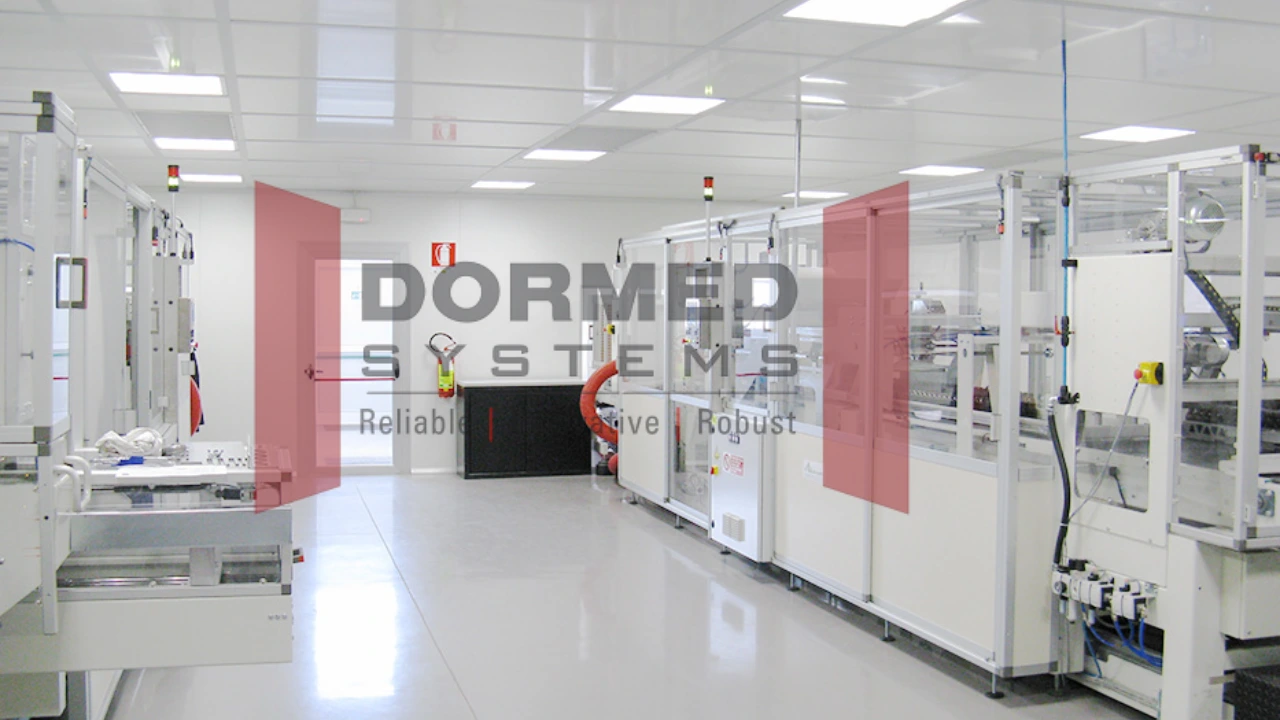In industries like pharmaceuticals, healthcare, biotechnology, and food processing, maintaining controlled environments is critical. Sterile rooms or clean rooms? Contrary to popular belief, the two terms are not interchangeable. Take a deep dive into the subject with KleanLabs, learning about where sterile manufacturing is used, what classifications are applicable and find out about some best practices applied in sterile manufacturing. We will explore the differences between sterile and clean rooms, their uses, and the benefits of each in various industries.
Also Read Us: Stainless Steel Door manufacturer
What is a Clean Room?
Clean rooms are highly controlled indoor environments where the number of particles and contaminants in the air, the temperature, humidity and pressure are all restricted by predetermined standards, including the number of micron and tenth micron particles. Clean rooms are used in various industries where even small amounts of contamination can affect the quality of a product or the result of an experiment. Dormed System is the leading clean room door manufacturer. This door is used in medical places, pharmaceutical places, healthcare etc. These rooms use specialized air filtration systems, such as HEPA (High-Efficiency Particulate Air) filters, to maintain a particulate-free environment.
Uses of Clean Rooms:
- Electronics Manufacturing: Producing components like semiconductors and microchips.
- Pharmaceuticals: For drug production and packaging.
- Aerospace: For assembling sensitive equipment that must remain free from contaminants.
- Biotechnology: Ensuring the purity of biological materials and research.
Features of Clean Rooms:
- Air Filtration: HEPA or ULPA filters remove airborne particles.
- Airflow Control: Positive or negative air pressure can be maintained to prevent contamination from entering.
- Controlled Temperature and Humidity: Ensures an optimal working environment.
- Cleanliness Levels: Clean rooms are classified by the number and size of particles per volume of air (e.g., ISO 14644-1 classification). The most common classifications range from ISO 1 (the cleanest) to ISO 9 (least clean).
What is a Sterile Room?
A sterile room is a much more stringent controlled environment compared to a clean room. It is designed to eliminate all forms of microbial life, including bacteria, viruses, and fungi. Sterility is achieved through the use of advanced sterilization techniques, such as high-pressure steam or chemical disinfection, along with continuous air filtration and other methods to maintain a germ-free environment. Sterile environments, however, go a step further – they are completely bacteria and microorganism free. Sterile manufacturing is usually required for some very specific tasks such as filling of vaccines.
Uses of Sterile Rooms:
- Medical Device Manufacturing: For producing implants, surgical instruments, and other medical equipment.
- Pharmaceuticals: For sterile drug preparation, including injectable drugs and vaccines.
- Healthcare: Sterile environments are used in operating rooms, hospitals, and research labs for procedures requiring absolute sterility.
Features of Sterile Rooms:
- Microbial Control: Focuses on eliminating or inactivating bacteria, viruses, fungi, and other microorganisms.
- Sterilization Methods: Includes autoclaving, ultraviolet light, or chemicals to ensure complete microbial removal.
- Higher Cleanliness Standards: Sterile rooms typically maintain cleaner environments than clean rooms, often requiring a higher level of air filtration and maintenance protocols.
- Access Control: Strict hygiene procedures such as gowning, handwashing, and the use of gloves are required for anyone entering a sterile room.
Key Differences between Sterile and Clean Rooms
- Contamination Control:
- Clean rooms primarily focus on controlling the number of particles in the air.
- Sterile rooms aim for the complete elimination of microbial life and particles.
- Clean rooms primarily focus on controlling the number of particles in the air.
- Sterility Level:
- Clean rooms allow a limited number of microorganisms but control particulate contamination.
- Sterile rooms must maintain absolute sterility, ensuring no living organisms are present.
- Clean rooms allow a limited number of microorganisms but control particulate contamination.
- Air Filtration:
- Clean rooms use HEPA or ULPA filters to remove airborne particles.
- Sterile rooms use advanced filtration, combined with sterilization techniques, to prevent microbial contamination.
- Clean rooms use HEPA or ULPA filters to remove airborne particles.
- Industry Applications:
- Clean rooms are used in industries such as electronics, food production, and some pharmaceutical processes.
- Sterile rooms are critical for medical and pharmaceutical industries, especially in environments where sterility is crucial to prevent infection or contamination (e.g., hospitals, drug production).
- Clean rooms are used in industries such as electronics, food production, and some pharmaceutical processes.
- Regulatory Standards:
- Clean rooms are typically classified according to ISO standards (ISO 14644-1).
- Sterile rooms must meet more rigorous standards, such as those defined by organizations like the FDA, WHO, or GMP (Good Manufacturing Practices).
- Clean rooms are typically classified according to ISO standards (ISO 14644-1).
Conclusion
Both sterile and clean rooms play a critical role in maintaining product quality and safety in various industries. All in all, we can conclude that sterility adds a whole new dimension to clean environments. At Dormed System, we are a manufacturer of clean room door with innovation and dedication towards our product quality. In case of invasive procedures, certain strains must be protected from other strains. This is why aseptic techniques are essential in some industries such as the medical field or pharmaceutics. While a clean room minimizes particulate contamination, a sterile room goes a step further by eliminating all microbial life. Understanding the distinctions between the two will help you select the appropriate environment based on your operational needs, ensuring that your products or experiments are protected from contamination and meet the highest quality standards.

